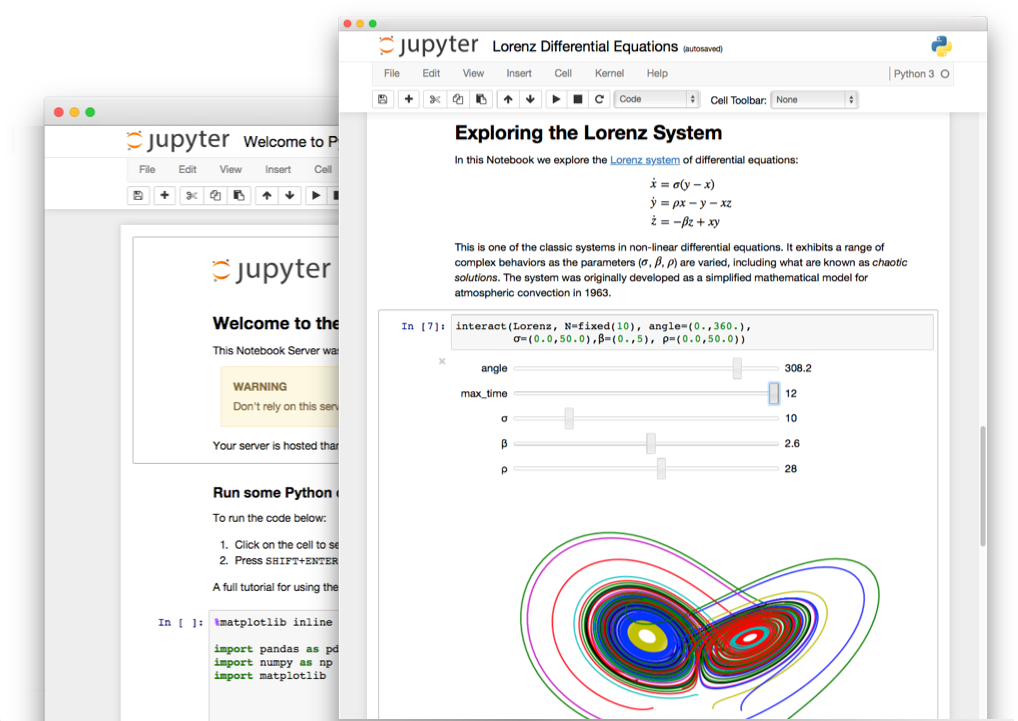August 22 - 25, 2017
New York, NY
Ready to get started?

 The Jupyter Notebook
The Jupyter Notebook
The Jupyter Notebook is an open-source web application that allows you to create and share documents that contain live code, equations, visualizations and explanatory text. Uses include: data cleaning and transformation, numerical simulation, statistical modeling, machine learning and much more.
Language of choice
The Notebook has support for over 40 programming languages, including those popular in Data Science such as Python, R, Julia and Scala.
Share notebooks
Notebooks can be shared with others using email, Dropbox, GitHub and the Jupyter Notebook Viewer.
Interactive widgets
Code can produce rich output such as images, videos, LaTeX, and JavaScript. Interactive widgets can be used to manipulate and visualize data in realtime.
Big data integration
Leverage big data tools, such as Apache Spark, from Python, R and Scala. Explore that same data with pandas, scikit-learn, ggplot2, dplyr, etc.
A multi-user version of the notebook designed for companies, classrooms and research labs
Pluggable authentication
Manage users and authentication with PAM, OAuth or integrate with your own directory service system. Collaborate with others through the Linux permission model.
Centralized deployment
Deploy the Jupyter Notebook to all of the users in your organization on centralized servers on- or off-site.
Container friendly
Use Docker containers to scale your deployment and isolate user processes using a growing ecosystem of prebuilt Docker containers.
Code meets data
Deploy the Notebook next to your data to provide unified software management and data access within your organization.
Jupyter Architecture
The Jupyter Notebook is based on a set of open standards for interactive computing. Think HTML and CSS for interactive computing on the web. These open standards can be leveraged by third party developers to build customized applications with embedded interactive computing.
The Notebook Document Format
Jupyter Notebooks are an open document format based on JSON. They contain a complete record of the user's sessions and embed code, narrative text, equations and rich output.
Go backInteractive Computing Protocol
The Notebook communicates with computational Kernels using the Interactive Computing Protocol, an open network protocol based on JSON data over ZMQ and WebSockets.
Go backThe Kernel
Kernels are processes that run interactive code in a particular programming language and return output to the user. Kernels also respond to tab completion and introspection requests.
Go back